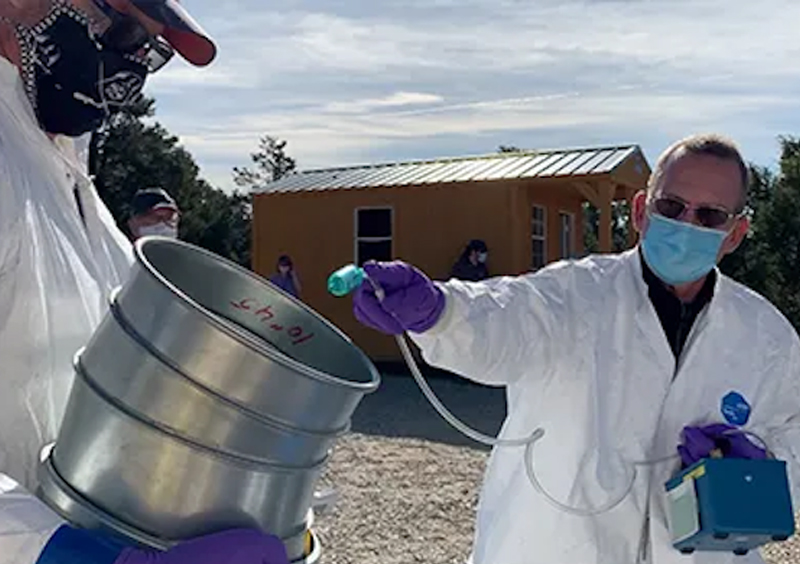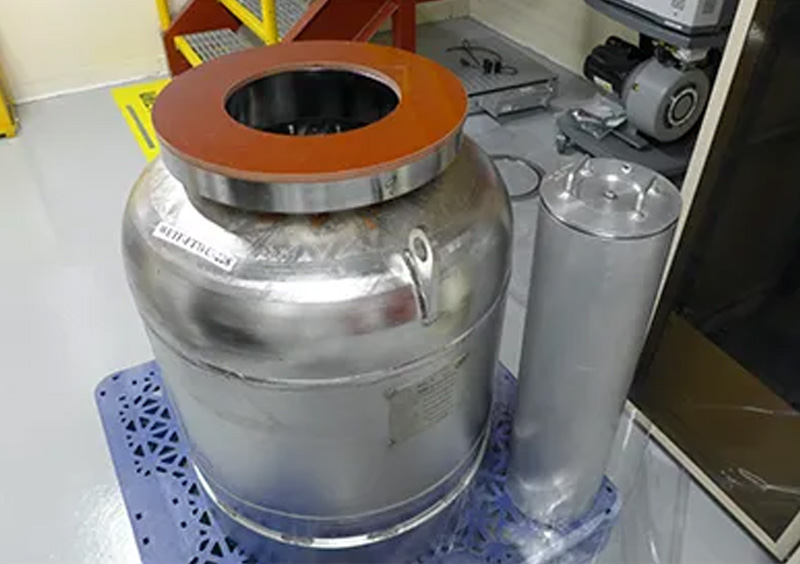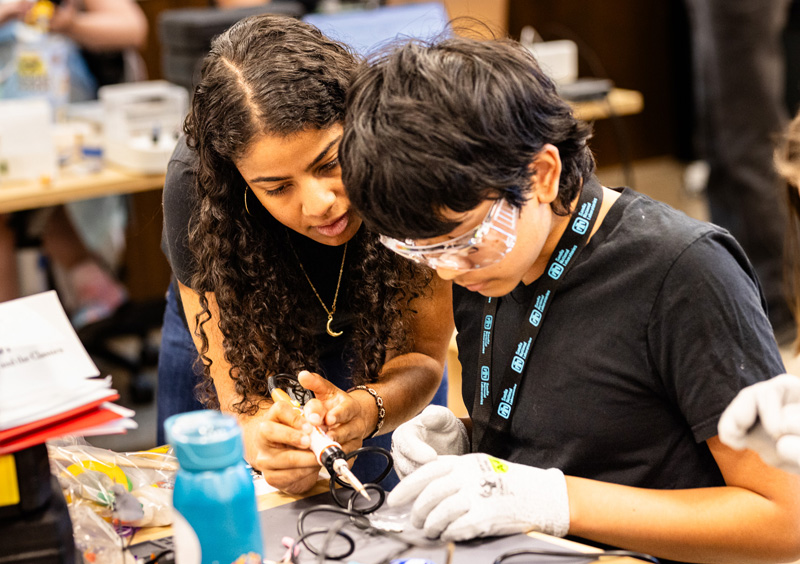Broken apple cider jugs and an empty can of barley malt syrup, found at an early 1900s homestead site now on Los Alamos National Laboratory property, might rouse easy assumptions about a family’s day-to-day life.
But when you partner with the descendants of that family — like Lab archeologists did for what’s now the basis of a new Bradbury Science Museum exhibit, opening June 25 — you get the real account.
The Bradbury Science Museum, located at 1450 Central Ave. in Los Alamos, unveils its latest exhibit at its opening reception 4:30 to 6 p.m. June 25, with Laboratory archaeologists and descendants of Pajarito Plateau homesteaders on hand to share their stories. The event is free and open to the public.
“This exhibit is at the heart of what we do,” said Bradbury Science Museum Director Patrick Moore. “Preserving and presenting this remarkable piece of New Mexico’s past is a critical part of the Laboratory’s mission.”
For the new exhibit, family members divulged that Sara Montoya, who had a homestead at the top of the present-day Truck Route with husband Enrique in 1932, used barley malt and cider jugs for brewing beer and fruit wine, respectively. And when excise tax collectors came around during the Prohibition Era, she hid the beverages in her wash tub to avoid apprehension or seizure — until 1933, at least, when Prohibition ended.
The story holds weight because, according to historians, “Women make up less than 1% of recorded history,” said Lab archeologist Ali Livesay, who helped create the exhibit on Pajarito Plateau homesteaders — a project spearheaded by the Lab’s Enduring Environmental Stewardship program, managed by Nell Larson, in coordination with Bradbury staff. “Because they tended to domestic matters, a lot of their activities, whether illicit or not, weren’t considered important enough to record or investigate. Women and the economies of women were vastly underappreciated for their ingenuity.”
“This exhibit is part of a larger effort by the Laboratory to strengthen communication with the public about the Lab’s commitment to responsible management of cultural and natural resources,” Larson said. “While many residents and Lab employees may be aware of this formative part of our history, we’re eager to share it more broadly with visitors and newcomers.”
Highlighting homesteaders’ early contributions to Manhattan Project
That history involves Los Alamos being chosen in 1942 as the secret site to build the bomb that would end World War II, and the 36 homesteads on the Pajarito Plateau being acquired by the government for what was known as Project Y.
By then, homesteaders had made significant contributions to the land, clearing vegetation and building basic infrastructure such as cabins and outbuildings. Most homesteaders were Hispanic families from the Rio Grande Valley who moved each spring or summer to the mesa’s higher ground. They sought greener pastures for livestock, as well as land for growing cash crops that would supplement their subsistence lifestyle — primarily anything they could dry, like pinto beans and wheat, that would hold up during shipping.
Others were Anglo families who lived here year round and built more permanent infrastructure. Together, they readied this remote swath of land for further development, which increased its appeal to the federal government when scouting potential Manhattan Project sites.

When the government acquired the land, Hispanic homesteaders were compensated at a fraction of what Anglo families were given. Then, decades later, in 2004, Congress created a $10 million fund for descendants to account for the disparity.
“Having their land acquired through condemnation and not being equally reimbursed is something we can’t ignore,” Livesay said. “At the very least, having some of their stories told in this exhibit is a way to help that. These families have been integral to the Lab since the Manhattan Project, and their descendants continue be a critical part of our workforce today.”
Connecting the dots
Livesay connected with the Montoya descendants, as well as members of the Vigil family — who first owned the homestead before selling to the Montoyas — through a happenstance encounter with one distant relative.
In 2019, at an archaeology conference in Albuquerque, Livesay met Joaquín Montoya, the great-grandson of Enrique and Sara, who was there on behalf of the Santa Fe archaeology firm he worked for. The two started talking, Joaquín mentioned that his family once had a homestead on Laboratory property, Livesay said she was very familiar with it through her work, and soon they organized a gathering with living family members at the old homestead site.

It was then that Livesay heard the families’ personal accounts, some of which are incorporated into the new exhibit, along with artifacts from other several homesteads where excavation happened earlier in Lab history.
“When you have a true collaboration with descendant families, you can get much more nuanced and fascinating stories about people than you can just looking at artifacts,” Livesay said, adding that the exhibit now has a different interpretive lens than another one on homesteaders from years prior. “Archaeology is evolving — it’s much more expansive than just excavating and curating artifacts in facilities in perpetuity.”

Engaging more with indigenous communities, too
The homestead exhibit came about after new regulations under the Native American Graves Protection and Repatriation Act were issued last year by the Department of Interior. The regulations allow for more involvement from indigenous communities when certain cultural items and human remains are found by entities like the Lab that receive federal funds.
The regulations mean the ancestral puebloan objects that had been on display at the Bradbury were taken down while the NNSA Los Alamos Field Office consults with affiliated tribes on how they’d like to manage them.
“Working with our U.S. Department of Energy counterparts and surrounding tribal stakeholders to ensure indigenous knowledge is incorporated into our understanding of cultural resources across the Lab helps us maintain compliance with federal laws,” said Lab archaeologist Sam Linford, who was also integral to the new exhibit. “It also offers new insights into the important history across the Pajarito Plateau.”
Operated by Los Alamos National Laboratory, the Bradbury Science Museum is open Tuesday through Saturday from 10 a.m. to 5 p.m. and Sunday from 1 to 5 p.m. The museum’s exhibits document the science of the Laboratory’s 80-year history, including advances in supercomputing, nuclear nonproliferation, biotechnology and climate science. The museum is free and open to the public.
LA-UR-25-25724





